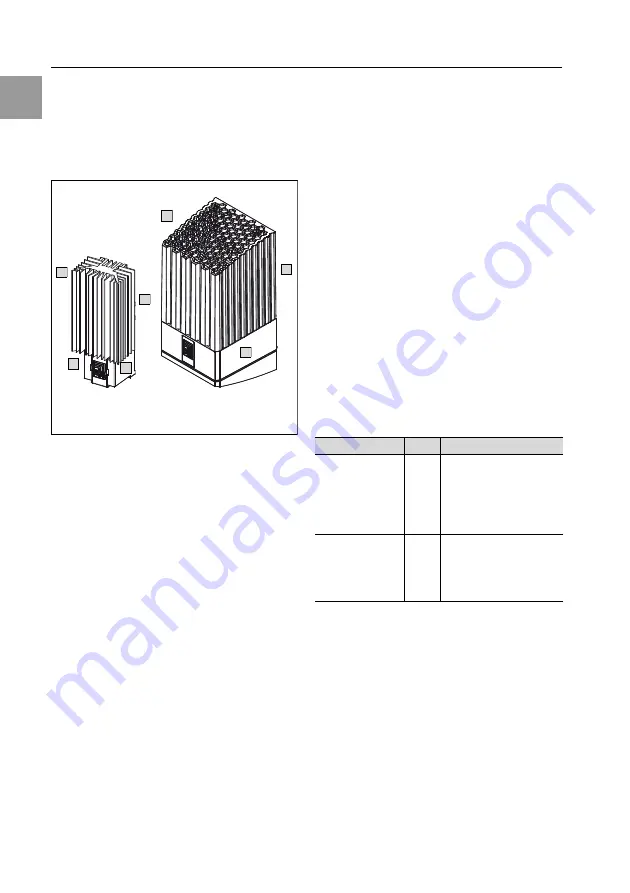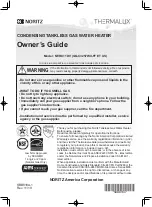
4
Rittal enclosure heater assembly instructions
3 Device description
EN
3
Device description
Depending on the model chosen, your heater
may vary in appearance from the illustrations
contained in these instructions.
However, the functions are identical in
principle.
Fig. 1:
Device description
(
ey
1
Aluminium section (without fan) or heater
housing (with fan)
2
Protective cover for electrical connection
3
Base plate
4
Fixing points
3.1 Functional description
Heaters are used to prevent the formation of
condensation inside the enclosure and
maintain a constant minimum operating
temperature (e.g. when the system is
switched off overnight).
Rittal heaters achieve thermal outputs of
8 to 870 watts.
3.1.1 How it works
The heaters are comprised of the following
main components:
Heaters without fan
– Aluminium section
– PTC heater element
Heaters with fan
– PTC heat register
– Fan
3.1.2 Control
A separate thermostat (3110.000) or a digital
thermostat (3114.200) must be used to con-
trol the enclosure temperature. The humidity
of the air in the enclosure can be controlled
by incorporating a hygrostat (3118.000).
3.2 Proper use
Rittal heaters were developed and designed
in accordance with the state of the art and the
recognised rules governing technical safety.
Nevertheless, if used improperly, they may
pose a threat to life and limb or cause dam-
age to property. The heater is designed to
heat closed enclosures that are only accessi-
ble by trained specialists. The admissible
temperature range is -33°C to +65°C. The
manufacturer will not be liable for any damag-
es caused as a result of improper use, or for
incorrect assembly, installation or use. All risk
is borne solely by the user.
3.3 Scope of supply
The heater is supplied in one packaging unit.
Tab. 1:
Scope of supply
Without fan
With fan
1
3
4
2
1
3
4
*K
de
H
+K
Qty
Desig
J
ati
KJ
3105.310 – .370
1
1
1
1
Base plate
Aluminium section
Cover cap
Assembly instructions
Assembly parts
(see fig. 2)
3105.380 – .430
1
1
Heater
(pre-assembled)
Assembly instructions
Assembly parts
(see fig. 2)





























